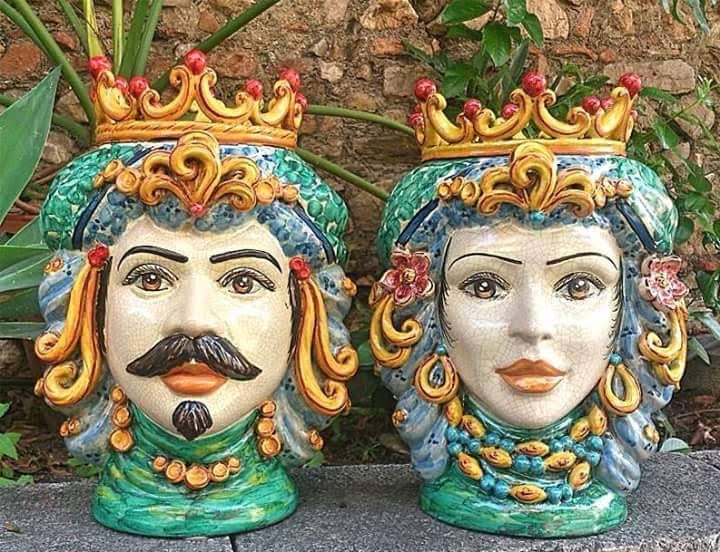Sicily is an island full of history, traditions, and legends.
During its long lasting life, Sicily has had so many different dominations. These dominations have influneced everything in Sicily from our food, to our culture, to our language.
In this article we are going to tell you about one of the most enchating symbols of the Sicilian ceramic art tradition: La Testa di Moro.
There are two legends about this topic and both involve two lovers, a Moro (Moro means Arabian man) and a Sicilian woman.
The first legend tells us about a love affair between an aristocratic beautiful Sicilian woman and a beautiful Arabian man. They had a clandestine love for many years.
Then one day, the woman's family found out their secret. The family felt a huge shame for their love. The woman's family decided that the only way to save their family honor was to kill both and expose their heads on their balcony. After they did so and some time passed, the heads started to deteriorate. The family then had 2 ceramic vases custom made depicting the tragic couple's faces, so that their heads could be on display forever.
Here's the second legend. This legend says that around the 1000 ac, when the island was dominated by the Arabians, a young beautiful Arabian man developed a crush on a young beautiful Sicilian woman who lived in one of the buildings in "Al Hàlisah," a neighborhood known today in Palermo as La Kalsa (where we go on our Palermo Street Food tours!)
The man tried so hard to make eye contact with his crush; he was hoping to have a chance to speak with her. Finally the woman noticed him too and the man had his opportunity to declare his true love for her. The woman immediately fell in love with his intensity and passion.
Shortly after, the man confessed to her the truth about this life, that he was actually already married and he had to go back to his family (smh). The woman felt so sad about the idea of losing her love forever. She also felt betraid and that her pride had been dishonored.
So, she decided to kill the man and cut his head off. She put his head on her balcony with all her other plant vases. She planted a basil plant (from Basilikos, the king plant) inside the head and she watered the plant for the rest of her life with her tears.
Since then the head-planter trend took off. Sicilians still think that planters shaped like heads are a very nice way to decorate their balconies.
Both legends have some similarities and explain why also today we see these planters. We do not know which is the true legend, but we do know that these stories were very important and have survived after almost 1000 years.
Today you can find the Testa di Moro symbol all around Sicily. But the most important village for the creation of these pieces of art is Caltagirone, a city famous for their great ceramic tradition. The main steps in the village of Caltagirone are decorated with ceramic that reproduce the story of our different dominations. Every 14 steps the style changes according to the different dominations: Phoenicians, Greeks, Romans, Normans etc.




